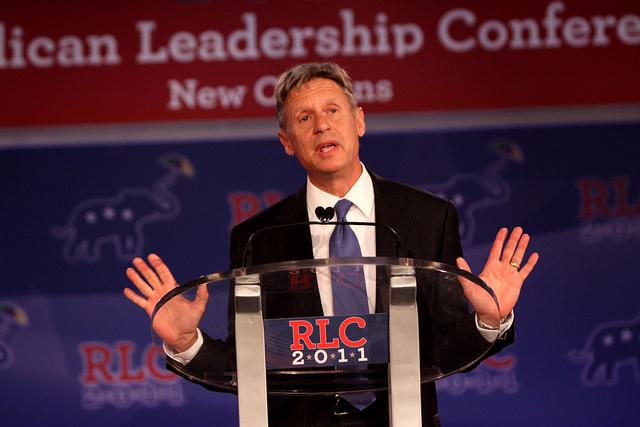By James Duffy, sports editor
America is caught between a rock and a hard place. On the left is the untrustworthy, pandering rock, who FBI Director James Comey recently described as “extremely careless” while handling classified information. On the right is the racist, xenophobic hard place, who promises to make our nation great once more by deporting minorities and shredding the first amendment.
Both Hillary Clinton and Donald Trump are viewed unfavorably by nearly 60 percent of Americans, according to the latest poll conducted by the Economist. With the widespread dissatisfaction of the presidential candidates provided by the two major parties, many Americans are searching for a third choice. Two polls conducted in late May showed that 20 percent of Americans would vote for a third party candidate instead of Trump or Clinton.
For the first time in over two decades, a third-party candidate has a chance to make a significant impact on the presidential election in the form of Libertarian Gary Johnson. No independent has ever won the presidency. Normally they play the role of spoiler, such as Ralph Nader, Ross Perot or even Theodore Roosevelt, who sapped enough votes from one party to guarantee the other the election. A Johnson candidacy has more potential than that. He draws equal support away from Trump and Clinton, so would not hand either candidate the election, and the political climate is ripe for a third-party candidate to legitimately compete for the White House.
As the two-term governor of New Mexico, Johnson balanced the state budget and cut taxes to earn a reputation as one of the most fiscally conservative governors in the country. As a Republican governor, he also supported traditionally-liberal policies, such as the legalization of marijuana and a woman’s right to choose to have an abortion.
Johnson has boiled down his platform into four simple words: “Fiscally conservative, socially liberal,” and this slogan alone separates Johnson from Clinton and Trump. Like Clinton, Johnson’s platform has actual concrete policy, but unlike the former Secretary of State, Johnson’s policies and convictions have stayed the same throughout his political career. And much like Trump, Johnson managed to keep his platform simple and concise. However, Johnson’s simplified slogan carries actual weight, unlike Trump’s “Make America Great Again.”
Johnson is currently polling at an average of 9 percent nationwide in polls when pitted against Clinton and Trump, but he has climbed as high as 13 percent in polls this month and will be on the ballot in all 50 states in November. His magic number now is 15 percent. If Johnson can hit that number in three national polls, he cannot be denied a spot on the debate stage when the presidential debates start in September. Getting in the spotlight is all Johnson needs to mount a serious challenge to the two major candidates.
Johnson is the right candidate for America now, and the country has hardly been better poised to embrace a third party option. Nearly a third of registered voters identify as an independent and shun a major party, and Johnson himself believes that many would identify as Libertarians if they knew more about the party.
Johnson’s only problem is fame. His opponents have been national figures for decades, while he has yet to achieve widespread public recognition. According to a YouGov poll from May, 62 percent of voters have never heard of Johnson, and nearly a quarter of those who had heard of him were unsure where he stood on the issues.
Any voter who feels disenchanted with their party should look to Gary Johnson as their candidate. In reality, Johnson is far from perfect. He’s quirky and eccentric, and his policies fall on both sides of the aisle. He may not be exactly ideal for a majority of Democratic or Republican voters, but he’s better than the options the parties have put on the ticket.
As Johnson says himself at the end of many of his interviews, “Google Gary Johnson.” Look into his policies and consider his campaign. He’s the only reasonable candidate for this country.
Photo courtesy Gage Skidmore, creative commons









